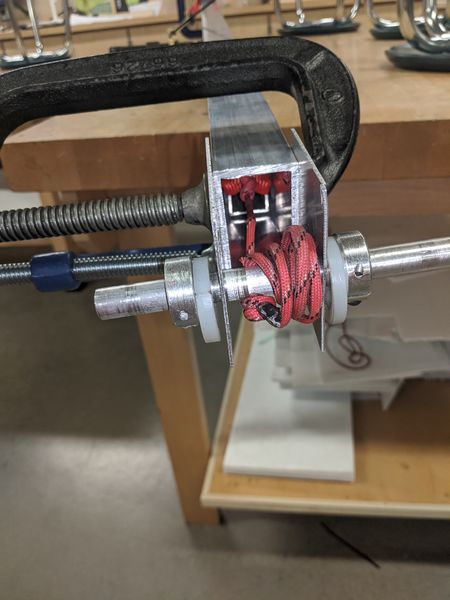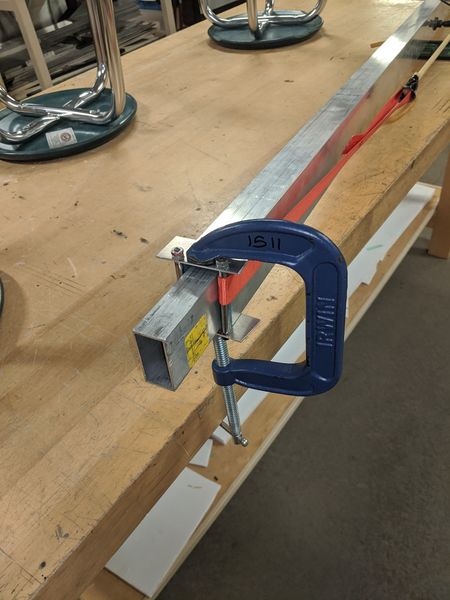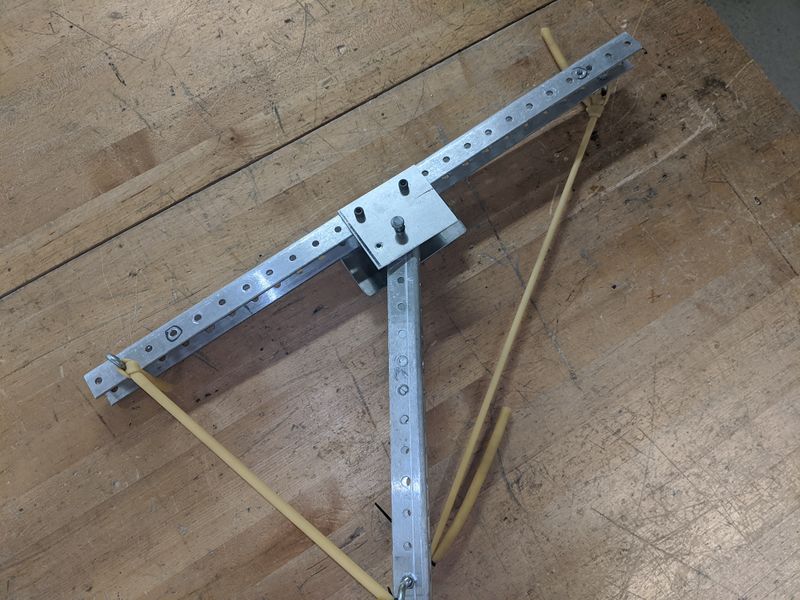2020:Hang: Difference between revisions
No edit summary |
No edit summary |
||
| Line 12: | Line 12: | ||
! scope="col" | Cons | ! scope="col" | Cons | ||
|- | |- | ||
| | | More Stable | ||
| | | Heavier | ||
| | | Lighter | ||
| | | Difficult to maintain | ||
|- | |- | ||
| | | Fits within the allotted space better | ||
| | | Wider | ||
| | | Thinner | ||
| | | Having 2 hooks is harder | ||
|- | |- | ||
| Easier to maintain | |||
| | | | ||
| | | Single motor | ||
| | | Less stability | ||
|- | |- | ||
| | | Easier to have 2 hooks | ||
| | | | ||
| | | | ||
| | | | ||
|- | |- | ||
| | | Single motor | ||
| | | | ||
| | | | ||
| | | | ||
|} | |} | ||
| |||
<span style="font-size:x-large;">Prototyping 1/5/2020-1/11/2020</span> | <span style="font-size:x-large;">Prototyping 1/5/2020-1/11/2020</span> | ||
| Line 71: | Line 53: | ||
'''Observations:''' We observed the following over the course of prototyping: | '''Observations:''' We observed the following over the course of prototyping: | ||
* | *Both prototypes work well. | ||
* | * | ||
'''Decisions:''' | '''Decisions:''' | ||
*We | *We will either have a telescoping frame or a telescoping arm. | ||
*We will not attach parallel to the bar, we want to come at it perpendicular (drive into it) | *We will not attach parallel to the bar, we want to come at it perpendicular (drive into it) | ||
'''Need to do:''' | '''Need to do:''' | ||
*Research COTS hooks, other hook designs | |||
*Research COTS hooks, other hook designs | |||
*Begin work on CAD designs for the arm and hook | *Begin work on CAD designs for the arm and hook | ||
*Decide on | *Decide on telescoping frame or telescoping arm. | ||
[[File:Self orienting hook mechanism v2.jpg|RTENOTITLE]] Self Balancing Mechanism | [[File:Self orienting hook mechanism v2.jpg|RTENOTITLE]] Self Balancing Mechanism | ||
| Line 122: | Line 102: | ||
Everyone that isn't Christian/Nicole: We finished the prototype for the self deploying hook by adding a quick hook to the end. We also fixed the tensioning on the self orienting hook prototype, so that the bar is relatively perpendicular to the arm. We then tested it by having it extend, put the hook over the bar, and then retract, leaving the hook on the bar. In theory, if we had another string attached to the hook, we would then be able to winch it. We discussed the pros and cons of having multiple hooks and/or having multiple arms. We decided against coming at the bar parallel. We still need to make decisions on basically everything. | Everyone that isn't Christian/Nicole: We finished the prototype for the self deploying hook by adding a quick hook to the end. We also fixed the tensioning on the self orienting hook prototype, so that the bar is relatively perpendicular to the arm. We then tested it by having it extend, put the hook over the bar, and then retract, leaving the hook on the bar. In theory, if we had another string attached to the hook, we would then be able to winch it. We discussed the pros and cons of having multiple hooks and/or having multiple arms. We decided against coming at the bar parallel. We still need to make decisions on basically everything. | ||
</div> </div> </div> </div> </div> </div> </div> </div> </div> </div> </div> </div> </div> </div> </div> </div> </div> | </div> </div> </div> </div> </div> </div> </div> </div> </div> </div> </div> </div> </div> </div> </div> </div> </div> | ||
Revision as of 19:04, 9 January 2020
Team Leads: Alex F. & Nicole L.
| Pros | Cons | Pros | Cons |
|---|---|---|---|
| More Stable | Heavier | Lighter | Difficult to maintain |
| Fits within the allotted space better | Wider | Thinner | Having 2 hooks is harder |
| Easier to maintain | Single motor | Less stability | |
| Easier to have 2 hooks | |||
| Single motor |
Prototyping 1/5/2020-1/11/2020
Overview: Based on initial team brainstorming and sketching, as well as the information from Strategy Subteam, we determined to prototype:
- Telescoping arm
- We are also prototyping a self-balancing mechanism.
- Deployed hook
- Hook designs
Observations: We observed the following over the course of prototyping:
- Both prototypes work well.
Decisions:
- We will either have a telescoping frame or a telescoping arm.
- We will not attach parallel to the bar, we want to come at it perpendicular (drive into it)
Need to do:
- Research COTS hooks, other hook designs
- Begin work on CAD designs for the arm and hook
- Decide on telescoping frame or telescoping arm.
 Telescoping arm Winch prototype
Telescoping arm Winch prototype
 Telescoping arm prototype other end
Telescoping arm prototype other end
Design
Daily Diary
1/7/2020 5:00-9:00
Attendance: Alex F, Nate S, Nicole L, Elliot W, Nevin W, Michael N, Ben S
We re-tested the telescoping arm and designed a self orienting hook mechanism base. Tommorow, we have to finish that and adjust the surgical tubing and add hooks to the bar. We need the tape measure spring for the final telescoping arm design if we choose to follow that route (and need the actual hooks, which are being prototyped as we speak/type). We have to decide if we want 1 or 2 telescoping arms still, it depends. See robot design for pictures or will update later. Videos are not allowed, on this wiki, so more pictures.
1/8/2020 5:00-9:00
Attendance: Nicole, Alex F, Nate S, Trevor W, Ben and Christian Stoeckl
Nicole: I did the calculations for where both robots would have to hang and how heavy they are to be balanced, the file is on the harris drive as "Torque for Hang NL". This spreadsheet doesn't account for only one robot to hang and doesn't take the 8 deg of allowance from being balanced. Tommorow we will have to fix that so that it can display when a robot is balanced at the center which can help us figure out if we need one arm or two arms. Tommorow we also need to figure out the force to lift the robot with one or two robots which will lead us to know what type of motors we might need. We also still need to figure out the size of the constant force spring to bring up the hook alone. We have to CAD up a scale sketch of the different arms (telescoping arm and the deploying arm at least) with it on top of the drive base so we can see how many sections we will actually need to have.
Everyone that isn't Christian/Nicole: We finished the prototype for the self deploying hook by adding a quick hook to the end. We also fixed the tensioning on the self orienting hook prototype, so that the bar is relatively perpendicular to the arm. We then tested it by having it extend, put the hook over the bar, and then retract, leaving the hook on the bar. In theory, if we had another string attached to the hook, we would then be able to winch it. We discussed the pros and cons of having multiple hooks and/or having multiple arms. We decided against coming at the bar parallel. We still need to make decisions on basically everything.
